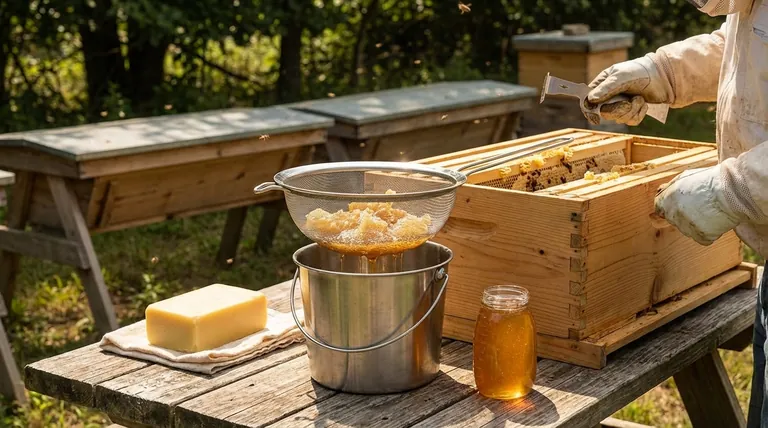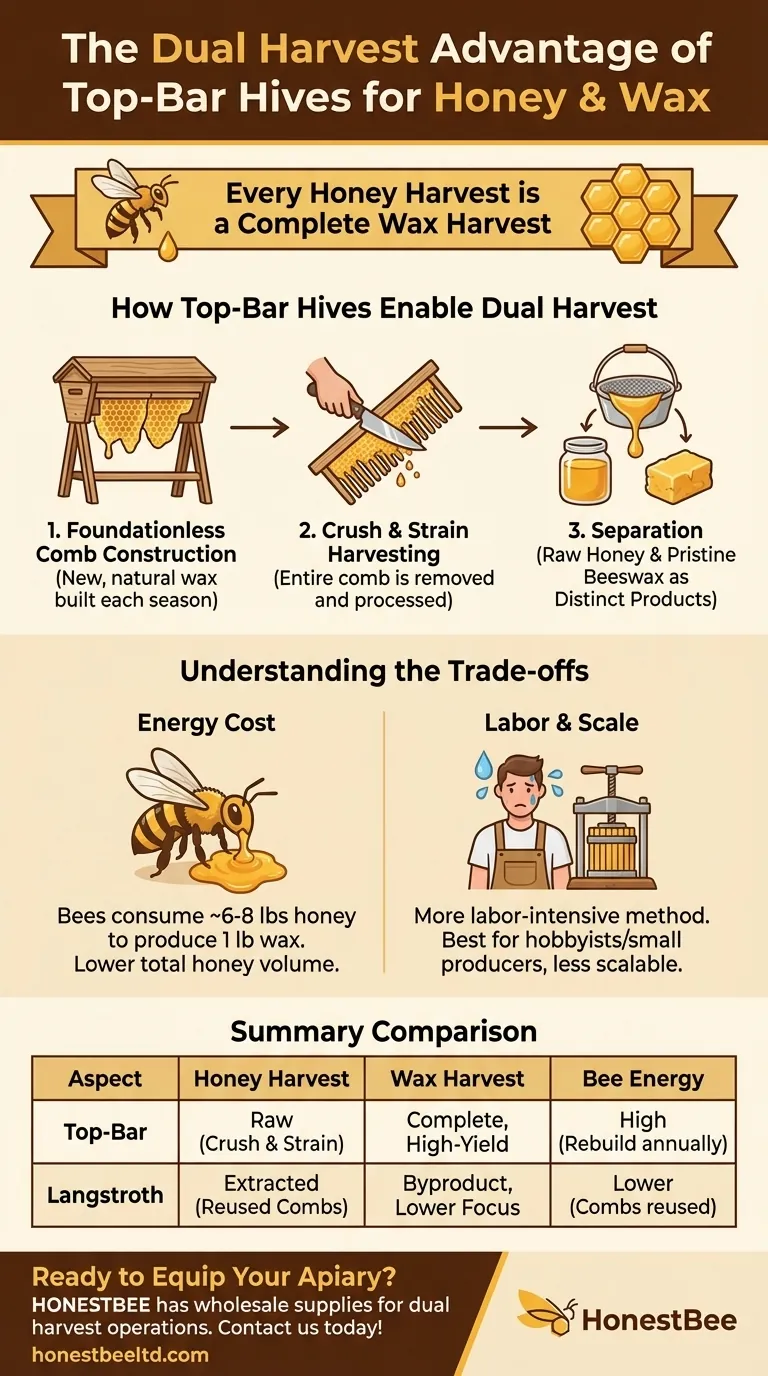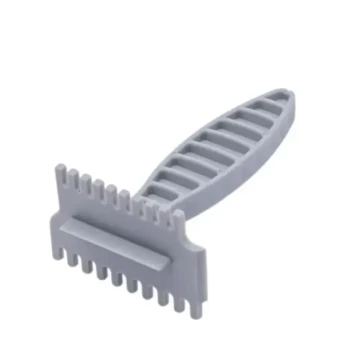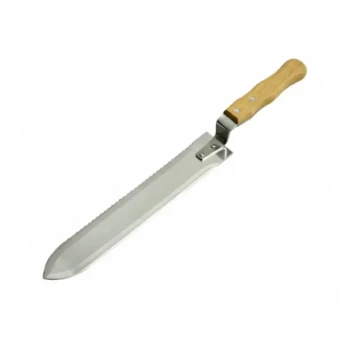The single greatest advantage of a top-bar hive for a beekeeper who values both products is that every honey harvest is also a complete wax harvest. Because the extraction process requires removing the entire comb, you are guaranteed a significant and high-quality yield of beeswax with every batch of honey you collect. This integrated harvest is a defining feature of the top-bar system.
The core difference lies in the extraction method. Unlike hives that use centrifugal extractors to preserve comb, top-bar hives rely on a "crush and strain" technique that renders the wax as a co-product of honey harvesting, not an afterthought.

How Top-Bar Hives Enable a Dual Harvest
The unique design and management of a top-bar hive are what make this dual-product system possible. It begins with how the bees build their home and ends with how you harvest it.
Foundationless Comb Construction
In a top-bar hive, bees build their comb naturally, hanging it from simple wooden bars that form the top of the hive. There is no pre-made foundation.
This means every comb is a fresh creation of wax, built entirely by the bees for that season's use. This natural construction is the first step toward a pure wax harvest.
The Harvesting Process: Crush and Strain
When you harvest from a top-bar hive, you do not reuse the comb. Instead, the entire comb is cut from the top bar.
This complete comb, full of honey, is then processed using a method known as crush and strain.
Separating Honey from Wax
The process is straightforward and effective. The honeycomb is cut into small pieces and placed in a container, often a food-grade bucket or a specialized honey press.
The honey then drains out, passing through a mesh cloth or filter, leaving the clean beeswax behind. The result is two distinct, high-quality products: pure, raw honey and a block of pristine beeswax.
Understanding the Trade-offs
While the dual harvest is a major benefit, it is essential to understand the trade-offs inherent in this system. This efficiency comes at a cost that must be factored into your beekeeping strategy.
The Energy Cost of Rebuilding Comb
The most significant trade-off is the energy bees must expend to constantly rebuild comb. Bees consume a large amount of honey—estimated at 6-8 pounds—to produce just one pound of wax.
Because you remove the entire comb, the bees must restart this process after every harvest. This can lead to a lower total volume of honey produced compared to a system like a Langstroth hive where combs are reused for many years.
Labor and Scale
The crush and strain method is simple but can be more labor-intensive and messy than using a centrifugal extractor, especially as your operation grows.
While perfect for a hobbyist or small-scale producer, it may become a bottleneck for beekeepers managing a large number of hives who need to process honey quickly.
Is a Top-Bar Hive Right for Your Goals?
Choosing a hive system depends entirely on what you want to achieve as a beekeeper. The top-bar hive excels in specific areas but may not be the optimal choice for every objective.
- If your primary focus is a balanced, high-quality harvest of both honey and wax: The top-bar hive is an outstanding choice, as its harvesting method inherently provides both products.
- If your primary focus is maximizing honey volume above all else: A Langstroth hive, which allows you to reuse drawn comb, may be more efficient as it saves the bees the significant energy cost of rebuilding wax.
- If your primary focus is a more "natural" or low-intervention style of beekeeping: The foundationless comb and simpler management of a top-bar hive often align well with this philosophy.
By understanding that the harvesting method dictates the final yield, you can choose the hive that perfectly aligns with your beekeeping goals.
Summary Table:
| Aspect | Top-Bar Hive | Langstroth Hive |
|---|---|---|
| Honey Harvest | Raw honey via crush & strain | Extracted honey, combs are reused |
| Wax Harvest | Complete, high-yield harvest with every extraction | Wax is a byproduct, not a primary focus |
| Bee Energy | High (bees rebuild comb annually) | Lower (combs are reused for years) |
| Best For | Beekeepers prioritizing both honey & wax, natural beekeeping | Beekeepers focused on maximizing honey volume |
Ready to Equip Your Apiary for Maximum Yield?
Whether you're a commercial beekeeper focused on a dual harvest or a distributor supplying the top-bar market, HONESTBEE has the wholesale supplies and equipment you need. From harvesting buckets and strainers to the hive components themselves, we support operations that value both honey and wax production.
Contact our wholesale team today to discuss your apiary's specific needs and scale your beekeeping business.
Visual Guide

Related Products
- HONESTBEE Advanced Ergonomic Stainless Steel Hive Tool for Beekeeping
- Professional Dual-End Stainless Steel Hive Tool for Beekeeping
- Metal Bee Hive Stand Bee Box Stand for Beekeeping
- Professional 3-Bar Frame Grip with Integrated Hive Tool
- Beehive Handle and Frame Rest Cutting Machine: Your Specialized Hive Machine
People Also Ask
- What are the features of a regular hive tool? The Essential Multi-Tool for Every Beekeeper
- Why do hive tools have a hole? Unlock the Secret to Efficient Beekeeping
- What are some common uses of a hive tool? Essential Multi-Purpose Tool for Every Beekeeper
- How should beekeepers handle bees when using a hive tool? Master Calm, Deliberate Techniques
- What tools are used for cleaning frames? A Beekeeper's Simple 4-Tool Guide



















